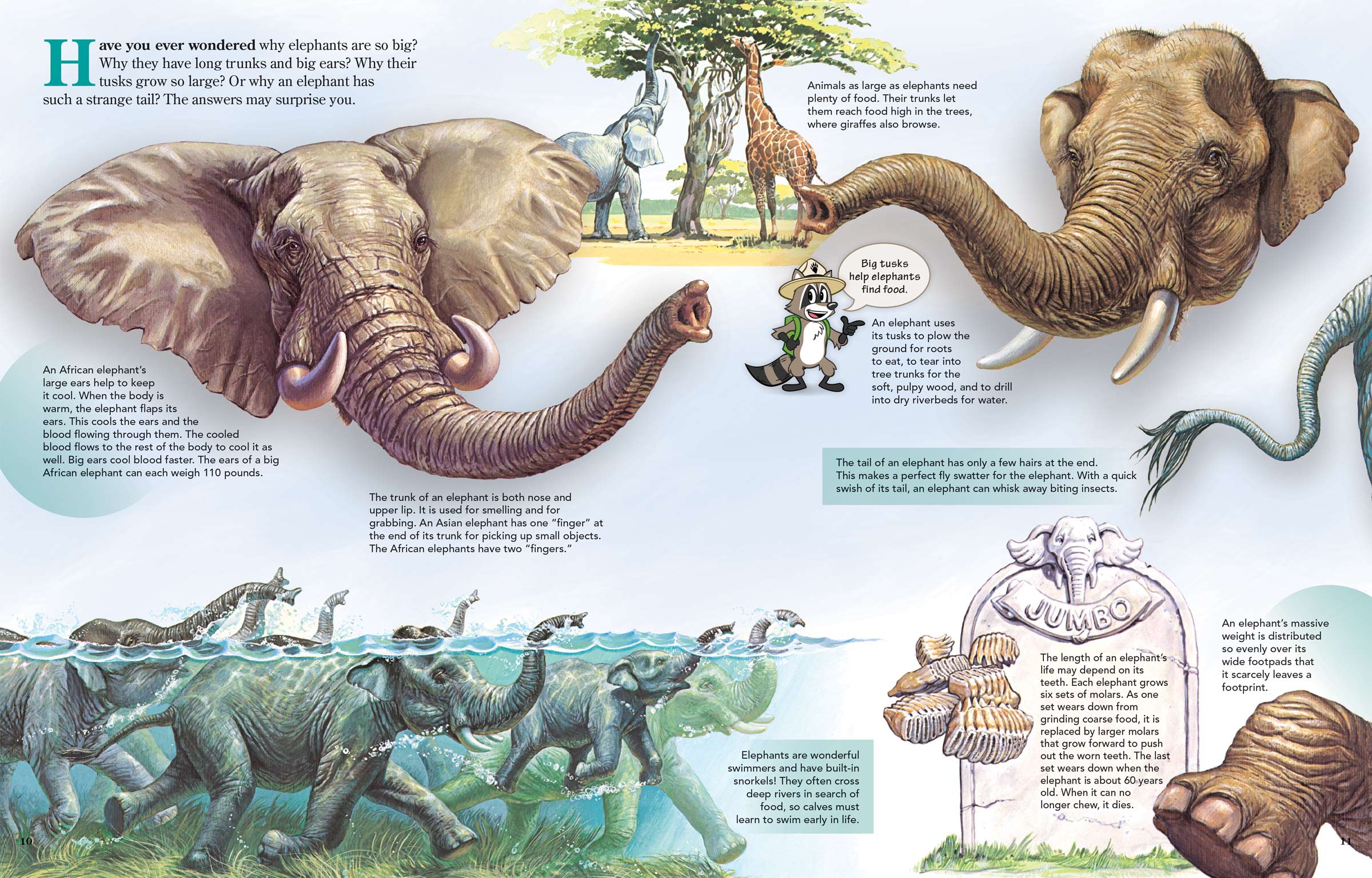
Elephant Snorkels
ByHave you ever wondered why elephants are so big? Why they have long trunks and big ears? Why their tusks grow so large? Or why an elephant has such a strange tail? The answers may surprise you.
An African elephant’s large ears help to keep it cool. When the body is warm, the elephant flaps its ears. This cools the ears and the blood flowing through them. The cooled blood flows to the rest of the body to cool it as well. Big ears cool blood faster. The ears of a big African elephant can each weigh 110 pounds.
The trunk of an elephant is both nose and upper lip. It is used for smelling and for grabbing. An Asian elephant has one “finger” at the end of its trunk for picking up small objects. The African elephants have two “fingers.”
Animals as large as elephants need plenty of food. Their trunks let them reach food high in the trees, where giraffes also browse.
Big tusks help elephants find food. An elephant uses its tusks to plow the ground for roots to eat, to tear into tree trunks for the soft, pulpy wood, and to drill into dry riverbeds for water.
The tail of an elephant has only a few hairs at the end. This makes a perfect fly swatter for the elephant. With a quick swish of its tail, an elephant can whisk away biting insects.
Elephants are wonderful swimmers and have built-in snorkels! They often cross deep rivers in search of food, so calves must learn to swim early in life.
The length of an elephant’s life may depend on its teeth. Each elephant grows six sets of molars. As one set wears down from grinding coarse food, it is replaced by larger molars that grow forward to push out the worn teeth. The last set wears down when the elephant is about 60 years old. When it can no longer chew, it dies.
An elephant’s massive weight is distributed so evenly over its wide footpads that it scarcely leaves a footprint.

